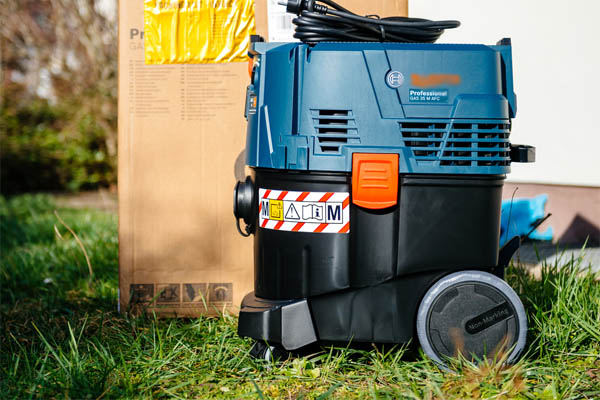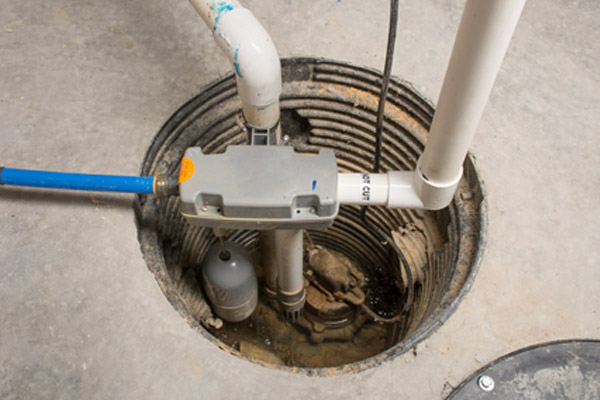An Guide to Correctly Taking Care of a Sump Pump
An Guide to Correctly Taking Care of a Sump Pump
Blog Article
What're your opinions about Steps to Cleaning Your Sump Pump Properly?

Sump pumps are crucial parts in lots of homes, especially in locations prone to flooding or extreme wetness. They aid protect against water damage by efficiently getting rid of excess water from basements or crawl spaces. Nevertheless, like any other device, sump pumps require normal upkeep to ensure they function efficiently when required the most. Cleansing your sump pump is a crucial part of its maintenance, and comprehending just how to do it properly can conserve you from expensive repair work and potential catastrophes.
Intro
Maintaining a clean sump pump is vital for its correct functioning and long life. Overlooking this vital job can lead to clogs, breakdowns, and ultimately, water damages to your building. For that reason, discovering how to cleanse a sump pump is essential for homeowners who rely on these devices to maintain their basements dry and safeguarded.
Comprehending the Sump Pump
Prior to diving into the cleaning process, it's necessary to have a standard understanding of exactly how a sump pump works. Generally mounted in a pit or basin listed below the cellar flooring, a sump pump consists of a number of vital parts, consisting of a pump, a float switch, and a discharge pipeline. When water collects in the pit, the float switch activates the pump, which then pumps the water out through the discharge pipeline, far from the structure's foundation.
Indicators of a Dirty Sump Pump
Knowing when your sump pump requires cleaning is essential for stopping potential breakdowns. Some typical indicators that show a filthy sump pump consist of odd noises during procedure, reduced water flow, and visible debris in the pit. If you discover any of these signs, it's vital to clean your sump pump quickly to stay clear of any kind of additional problems.
Preparing for Cleaning
Before you begin cleansing your sump pump, it's necessary to take some safety and security preventative measures. Beginning by shutting off the power to the pump to stay clear of any kind of electrical crashes. In addition, wear appropriate safety equipment, such as handwear covers and safety glasses, to secure yourself from dust, particles, and potential microorganisms.
Step-by-step Overview to Cleaning Up a Sump Pump
Turning off the Power
Begin by detaching the power supply to the sump pump to prevent any type of crashes while cleaning.
Eliminating Particles and Dust
Utilize a bucket or a scoop to eliminate any kind of visible debris, dust, or sediment from the sump pit. Dispose of the particles effectively to avoid it from obstructing the pump or the discharge pipe.
Cleaning up the Pump and Drift Switch Over
Once the pit is clear of debris, meticulously remove the pump from the pit. Evaluate the pump and the float button for any kind of signs of damage or wear. Make use of a soft brush or cloth to clean the surface areas and eliminate any type of gathered grime.
Purging the System
After cleaning up the pump and float button, flush the sump pit with clean water to remove any type of remaining dust or sediment. This will help make sure that the pump operates efficiently and effectively.
Checking for Correct Functioning
Before reinstalling the pump, carry out a fast examination to make sure that the float switch activates the pump properly. Put some water right into the sump pit and observe the pump's procedure. If whatever is working correctly, you can rebuild the pump and reconnect the power supply.
Upkeep Tips to Maintain Your Sump Pump Clean
Along with regular cleaning, there are a number of upkeep pointers you can follow to keep your sump pump in optimum condition:
Verdict
Cleaning your sump pump is a crucial facet of its upkeep and guarantees that it runs effectively when you require it the most. By adhering to the actions described in this guide and including regular upkeep right into your regimen, you can expand the lifespan of your sump pump and protect your home from water damages.
6 STEPS ON HOW TO CLEAN A SUMP PUMP PROPERLY
UNDERSTANDING SUMP PUMPS
Your sump pump plays a crucial role in protecting your home by managing and removing excess water. It primarily functions as a “shield”, guarding your basement against the damaging effects of water accumulation. The pump is housed in a sump pit in the lowest part of your basement, and its job is to pump out any water that collects there.
During heavy rainfalls or when snow melts rapidly, water can infiltrate your basement, posing potential risks like flooding, structural damage, and harmful mold growth. Here, the sump pump springs into action, pumping out the intruding water and directing it away from your home.
SAFETY FIRST
Before cleaning, remember to prioritize safety. Disconnect the sump pump from the power source to prevent any accidental electric shocks. Also, wear sturdy gloves to protect your hands from any sharp or dirty components within the pump.
REMOVE THE SUMP PUMP
After ensuring your safety, the next step is to remove the sump pump from its pit. Doing this might require careful maneuvering as you don’t want to damage any pump components. Once removed, clean the sump pit to remove any accumulated debris or sludge.
INSPECT THE PUMP
Inspect the pump for any visible signs of wear or damage. Check the power cord, float switch, and impeller housing. If any components look worn out or damaged, consider replacing them to ensure optimal performance.
CLEAN THE PUMP
Thoroughly clean the pump with warm, soapy water. Make sure to rid it of any dirt, gravel, or other debris that might impede its performance. You can use a toothbrush to clean the small, hard-to-reach parts of the pump.
REINSTALL THE SUMP PUMP
Reinstall the pump into the sump pit Make sure it’s positioned correctly to remove the water effectively Once it’s back in place, reconnect it to the power source TEST THE PUMP
Finally, pour some water into the pit to ensure the pump works correctly. It should start automatically and begin pumping out the water; if it doesn’t, check the power source and the positioning of the pump.
Remember, while cleaning your sump pump is an essential part of home maintenance, hiring a professional plumber for a thorough inspection and cleaning at least once a year is also important. This will ensure that your pump is in optimal condition, ready to protect your home from potential water damage.
BEST PRACTICES FOR CLEANING SUMP PUMP DISCHARGE PIPES
Regular Inspection: Regularly inspect your discharge pipes, especially during heavy rainfall or snowmelt periods. Look for any signs of blockage or damage. Early detection of problems can prevent serious issues down the line. Periodic Cleaning: Over time, sediment and debris can accumulate in the discharge pipes, impeding the flow of water. Regular cleaning helps keep the pipes clear and functioning efficiently. You can use a high-pressure water jet to effectively clean the pipes. Insulation During Winter: In colder climates, discharge pipes can freeze, blocking the outflow of water. Protect your discharge pipes from freezing temperatures by insulating them with foam pipe insulation. This will ensure the sump pump can continue to discharge water even in freezing conditions. Proper Positioning: The discharge pipe should be positioned to direct water away from your home’s foundation. Improper positioning can lead to water seeping back into the basement. Ensure the pipe is long enough and angled correctly. Installation of a Check Valve: A check valve prevents water from flowing back into your sump pit after the pump has pushed it out. Installing a check valve helps maintain the efficiency of your sump pump and reduces the risk of flooding. Minimize Pipe Turns: Every curve or turn in the discharge pipe can decrease the efficiency of water flow. By minimizing turns and bends in your discharge pipe, you can increase the efficiency of your sump pump. https://www.fullspeedplumbing.com/how-to-clean-a-sump-pump-properly9999/

We hope you enjoyed our section on How to Care for Your Sump Pump. Thank you so much for spending some time to browse our blog. Are you aware of anybody else who is fascinated with the niche? Do not hesitate to share it. Thanks for going through it.
Suggested Site Report this page